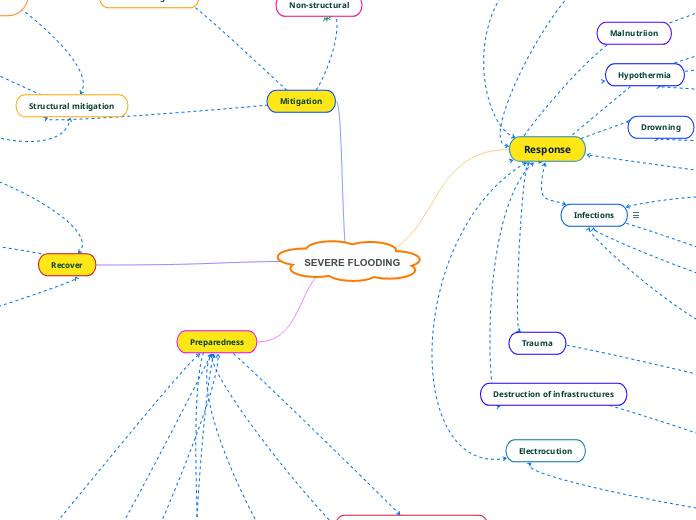Evaluation the effectiveness of the strategies
Provide emergency contact lines
Disconnect power supply from the source
Provide mental health counsellors and community health works
Safe removal of human and animal bodies
Provision of heater, hot drinks etc.
Provision of shelter
Provision of clothing support
Notify relevant stakeholders e.g Red cross, flood management organization, disaster management organizations
Provision of medicines
Relief materials
Employment
Shelter
Support (psycho social)
Provision of support system e.g psycho-social support, spiritual support, etc,
Collaborate with non-profit organization for various support
Design flood management plan
Provision of flood warning systems
Awareness creation
Rebuilding
Compensation
Flood management plan
Education/Awareness
Elevation of structures
flood insurance
Jetties
Retention ponds
Structural mitigation
Hazard mitigation
Non-structural
construction of flood gates and install barriers controlling
access to water
Provision of food bank
Evacuation
Pharmaceutical and medical equipment supplies
General provision
Provision of alternative infrastructures, e.g. roads, , evacuate through the air,
Electrocution
Promote infectious disease control programme
Enforce and monitor water treatment and sanitation
Enforce high standard of hygiene
Teach community members swimming and water safety skills
Provide emergency rescue team like trained bystanders for safe
rescue and resuscitation
Distribution of insecticide treated nets
Vacination
Famine (lack of food)
Malnutriion
Provide public health education /awareness
Provision of appropriate PPE
Provision of clean water
Destruction of infrastructures
Trauma
Provision of health care services
Hypothermia
Infections
Due to poor hygiene and sanitation these can also occur
Malaria
Typhoid
Cholera
Gastroentritis
Hepatities
etc.
Death
Drowning
SEVERE FLOODING
Preparedness
Recover
Mitigation
Response

